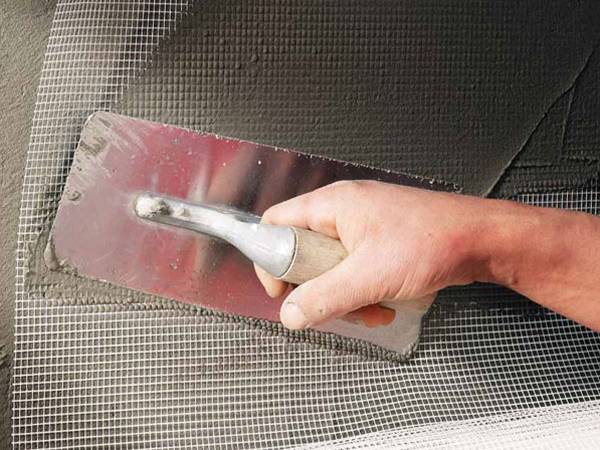
Fiberglass reinforcing plastering mesh used for plaster work
Plaster mesh is designed for better grip on the plaster wall and supporting the plaster layer. It protects the finished surface from cracks and improves the mechanical strength of plaster wall.
Fiberglass reinforcing plastering mesh must withstand high temperature, humidity and heavy loads. It has the important characteristics of resistance to corrosion, anti alkali and acid. Installing plaster fiberglass cloth is particularly pivotal for the ceilings, which often have insufficient rigidity. Plaster mesh made of glass or synthetic fibers, fiberglass cloth is often used to create plaster layer thickness of less than 3cm in order to strengthen the wall, it is fixed to the target surface by the base construction stapler. In order to attach plaster masking mesh to the wall, you need apply putty composition, and wait it frozen. Then place it on top of the mesh fabric, using a trowel push the mesh with an overlap of 10cm. Wait until the putty dry before apply external plaster layer.
Fiberglass reinforcing plastering mesh used for plaster work
Light type expanded metal sheet fixed to the wall by nails then plastering
In the curved surfaces of the walls or ceiling, plaster layer thickness may be different for the respective areas, above or below 5cm. If the thickness of plaster layer is more than 3cm, it needs to be strengthened using metal mesh - chicken wire, welded wire mesh or light expanded metal with anti-corrosion coating. Metal mesh was fixed to a surface often using screws and metal sheet piece.
Plaster metal mesh also can be fasten to wall surface by nails, operation as following. Metal mesh sheet cut to the desired size and first nail at one end, then tensioned tightly and beat at the other end, and nailed to the middle positioning. Nails are staggered at a distance from each other 100mm. Nails length from 55mm to 65mm. Nails are beat in wall about three quarter length, the rest folded and tightly clutching plaster mesh to the wall surface.
